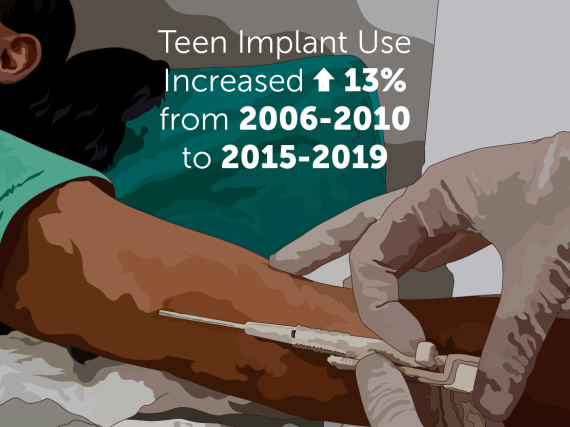A New Normal: Telehealth Delivers Birth Control
COVID-19 has undeniably changed everyone’s approach to health care—and so much more. Previous survey data from the US Department of Health and Human Services found that in-person clinic visits fell dramatically in mid-March 2020, and in the following month nearly half of Medicare primary care visits were provided through telehealth services, compared to less than 1% in February 2020. Overall, while only 11% of people in the US were using telehealth in 2019, nearly 50% had switched by late 2020.
And a new survey recently released by Twentyeight Health verifies this. In fact, it found that 97% of the 1,400 respondents plan to continue to use telehealth services to receive their birth control method even after the pandemic ends. This marks a drastic shift in the way people prefer to get contraception as nearly 50% reported that prior to the pandemic they received birth control through in-person provider visits.
Twentyeight Health is a telehealth company that specifically wants to increase access to affordable reproductive and sexual health for people living in underserved communities. And for the more than 19 million women of reproductive age living in a county without reasonable access to the full range of birth control methods, the opportunities opened through telehealth can be life changing.
Amy Fan, co-founder of Twentyeight Health, recently spoke to us about the survey results and telehealth’s growing importance:
Why are these survey results so important?
Unfortunately, many innovations exclude underserved communities because they are not designed nor implemented with the needs of underserved communities in mind. Telehealth has the potential to significantly broaden high-quality health care to all, and we wanted to share feedback from underserved communities and highlight the impact telehealth has had for them to spur inclusive innovation.
After reading the survey results, I’m more convinced than ever that, at its best, telehealth can truly increase access to care for underserved communities. When you consider that more than 40% of respondents making less than $25K per year were not accessing birth control before engaging with Twentyeight Health, the survey clearly shows that many people are using telehealth to access care that they were previously not receiving.
The results also signal that, when it comes to reaching underserved communities, affordability is only one part of the picture. Equally important is building a telehealth platform that is accessible to everyone—regardless of whether people have high-speed internet or the privacy to do a video consultation.
Why do you think accessing birth control via telehealth has resonated with people so much outside of the pandemic context?
For the individuals Twentyeight Health serves, physically getting to a clinic was already a challenge before the pandemic. Patients from underserved communities often cite lack of affordable transportation and inability to take time off of work or school as reasons why they miss appointments. Telehealth provides additional convenience and accessibility without sacrificing quality of care.
How do you see telehealth continuing to increase access for underserved people going forward?
If we want telehealth to reach its full potential of providing high-quality care to all, the way telehealth is covered and implemented needs to be more comprehensive.
First, the telehealth industry must move beyond synchronous video consultations. We live in a world where 19 million Americans lack access to high-speed internet. Additionally, many low-income individuals live in multigenerational households or even shelters, and don’t have the privacy needed to meet with a physician over live video. Audio-only consultations can provide a more seamless and private experience, and asynchronous forms of communication such as mobile messaging allows for additional privacy and discretion. Payer reimbursement for different telehealth methods will be crucial to encouraging providers to offer more options to patients.
Second, telehealth allows providers more flexibility to support patients through different parts of their journey. For example, 27% of women stop using contraception for reasons that could be addressed during family planning counseling, including questions about side effects. Asynchronous messaging can be employed by providers to easily follow up with patients, quickly answer questions, and help patients find treatments they can adhere to.
BCBenefits, our own effort to increase access to support everyone’s power to decide, helps people overcome some of the most commonly faced barriers when trying to get birth control. To date we have helped more than 3,000 people across the country access telehealth services, receive reimbursement for transportation costs or an in-person contraceptive visit, or get free emergency contraception.
People helped by BCBenefits have said:
“It was fast and easy, and I was able to get free birth control even though I don’t have insurance”
“I am very thankful that you have a program to help lower income women get the birth control they need. Many women, including myself, are uninsured and birth control is a financial burden. BCBenefits is amazing for helping women overcome that burden! Thank you!!”
Everyone should have the power to decide what their future holds. Give today to join the movement to stand up for what’s right. Just $5 gives a month of birth control pills to a person who needs it and only $50 gives a year's worth of birth control pills.


